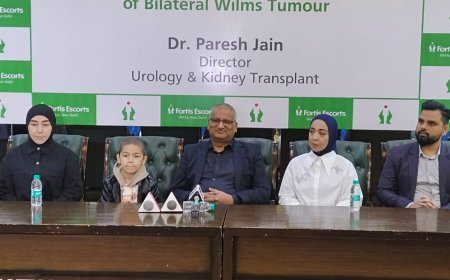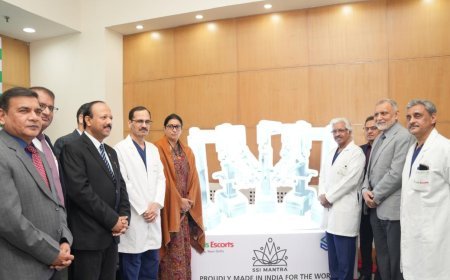Digitalization Is a Major Potential for the Indian Healthcare Sector, According to the NATHEALTH-Arthur D. Little Report

An update to the 2022 publication, "A Bold Vision for 1 Billion Digital Health users in India by 2030," entitled "Pathways to Scale Adoption of Digital Health in India," published by the top global Strategy and Management Consultancy firm Arthur D. Little (ADL) in partnership with NATHEALTH has identified digitalization as a key imperative for the Indian healthcare sector. The business claims that consumers have a high level of acceptance for digital health services. Although only 74% of the roughly 150 respondents to the poll were aware that health services were becoming more digital, 67% of them had recently utilised a digital health solution, and 73% acknowledged the value of digital health records. The Ayushman Bharat Digital Mission (ABDM) has gained a lot of support from Indians.Around 22% of the Indian population having ABHA ID and over 75% of public health facilities already in Health Facility Registry.
The report highlights the urgent necessity for the healthcare stakeholders in the business sector to adopt digitization. Even while private healthcare providers recognise the advantages of digitization, adoption is still in its infancy, according to an ADL survey of more than 30 private healthcare providers. Because of this, only 7% of providers have embraced digitization across all operational use cases, despite the fact that 93% of respondents felt that it is advantageous.
Despite varying degrees of digitalization, ABDM adoption is still constrained among private providers of all sizes and segments. This is mostly because the advantages are not well known. The ramifications of sharing internal digital systems and data, as well as data security, are concerning to bigger organisations. Because they see digitization as an expense rather than an investment, smaller players are resistant.
1. By technological demonstrations and legislative interventions, demonstrate data security and privacy safeguards for customer health records, for bigger provider segments.
2. Communicate clearly about the ABDM roadmap with providers, emphasising the advantages of digitization and ABDM adoption.
3. Recruit early supporters and collaborators (ABDM evangelists) from top private healthcare organisations, including digitally progressive companies from the healthtech and out-of-home sectors.
4. By establishing explicit certification requirements and roll-out schedules for healthtech, senior care, and home healthcare businesses, you may broaden the scope and ambition of ABDM.
5. Require all hospitals and diagnostic facilities to utilise ABDM-compliant software, and link them to quality accreditation. To improve this, additional Digital Solution Companies (DSCs) should be encouraged to join the ABDM ecosystem.
6. By the implementation of insurance for the missing middle and a single-window Health Claims Exchange (HCX) platform, increase insurance penetration and hasten payor consolidation.
7. Expand the ecosystem of ABDM tools and software providers by streamlining and demystifying compliance procedures and requiring DSCs to furnish providers with ABDM-compliant software.
--




















































